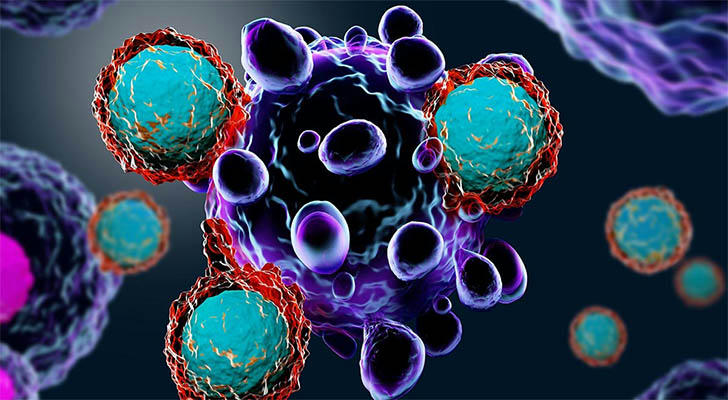Early signs of estrogen-positive breast cancer: How to tell?

Estrogen-positive breast cancer is one of the most common types of breast cancer and is characterized by cancer cells that rely on estrogen to grow. Due to its prevalence and far-reaching impact, early identification is crucial. Timely detection can significantly improve the effectiveness of treatment, reduce the burden of the disease, and improve prognosis. By knowing its early signs and undergoing regular checkups, patients can take action early to improve quality of life and survival.
What is estrogen-positive breast cancer?
Estrogen-positive breast cancer is a type of breast cancer in which cancer cells need estrogen to grow. Estrogen is a hormone in women's bodies that normally helps keep the body healthy, but in this type of cancer, estrogen stimulates the growth of cancer cells.
Specifically, estrogen can bind to receptors on cancer cells, like a "key" to open a "lock", allowing cancer cells to divide and grow rapidly. Estrogen also helps cancer cells live longer and helps them get more nutrients. Therefore, during treatment, drugs are often used to reduce estrogen levels in the body or prevent estrogen from binding to cancer cells to control the progression of cancer.
Common early signs of estrogen-positive breast cancer include:
• Hard lumps or bumps in the breast: These lumps may be painless or may be accompanied by discomfort.
• Nipple changes: The nipple may become dimpled or change shape, or there may be unusual discharge, such as blood or other colored fluid.
• Breast skin changes: The breast skin may become red, swollen, or have an orange peel appearance, and sometimes skin ulcers may occur.
• Swelling in the breast or underarm: Lumps or swelling may occur not only in the breast itself, but also in the underarm.
• Changes in the feel of the breast: The breast may become rough or lumpy.
These early signs do not necessarily mean that you have cancer, but it is important to see a doctor if you notice these changes.
Self-examination of the breast is an important way to detect breast problems early. Here are simple and easy steps to self-examination:
1. Choose the right time and environment
• When: It is best to choose a few days after your period ends because the breasts are usually the least swollen at this time.
• Environment: Choose a comfortable environment, such as taking a shower or lying in bed.
2. Observe the breasts
• While standing and sitting: Use a mirror to check the appearance of your breasts. Observe the symmetry of your breasts and any skin discoloration, lumps, or indentations.
• Nipples: Look for changes in your nipples, such as indentation, redness, or discharge.
3. Touch the breasts
• Position: Use different fingers (usually the middle and index fingers) to press on the breasts, touching the entire breast in circles, lines, or spirals, moving outward from the nipple to cover the entire breast area.
• Note: Feel for any lumps, bumps, or unusual nodules. Pay attention to all parts of the breast, including the underarm area, when examining.
4. Press on the nipples
• Gently squeeze the nipples to see if there is any unusual discharge (such as bloody or yellow fluid).
5. Confirm breast health
• If you notice any unusual changes, such as lumps, nipple changes, or skin abnormalities, contact your doctor for further examination.
• Regular examinations: It is recommended to perform self-examinations monthly and inform your doctor of any abnormal findings during each physical examination. Self-examinations combined with professional medical examinations can help detect potential problems early.
Early diagnosis and treatment of estrogen-positive breast cancer bring many potential benefits, including:
1.Improved cure rates: Early detection can greatly improve the chances of successful treatment, making cancer easier to control or cure.
2.Reduced burden of treatment: Early cancers are usually smaller, and treatment may require less surgery and other treatments, and side effects may be milder.
3.Improved survival: Early treatment can help prevent cancer from spreading to other parts of the body, thereby improving long-term survival.
4.Better maintenance of quality of life: Timely treatment can reduce the impact of cancer on daily life and help patients return to normal life more quickly.
5.Reduced medical expenses: Early diagnosis and treatment are usually less expensive than late treatment, reducing long-term medical expenses and treatment complexity.
In short, early detection and treatment can significantly improve treatment effectiveness and patients' quality of life, and are key strategies in the fight against estrogen-positive breast cancer.
Real case
Maria (pseudonym) is a 45-year-old woman who regularly performs breast self-examinations. A few months ago, she found a small lump in her right breast during a self-examination. Although the lump did not cause her much concern at first, she decided to see a doctor. After a series of tests, including breast ultrasound and biopsy, it was confirmed that she had early estrogen-positive breast cancer. Because her condition was discovered early, doctors developed a targeted hormone therapy plan and performed a partial mastectomy. Maria has recovered well after treatment and is currently undergoing regular follow-up, with a greatly improved quality of life.
Conclusion
Early diagnosis and treatment of estrogen-positive breast cancer can significantly improve cure and survival rates. When cancer is found early, treatment is usually simpler, with fewer side effects, and quality of life is easier to maintain. In addition, early treatment can reduce the spread of cancer and reduce long-term medical expenses. Overall, timely detection and intervention can effectively improve treatment outcomes and help patients return to normal life faster.
